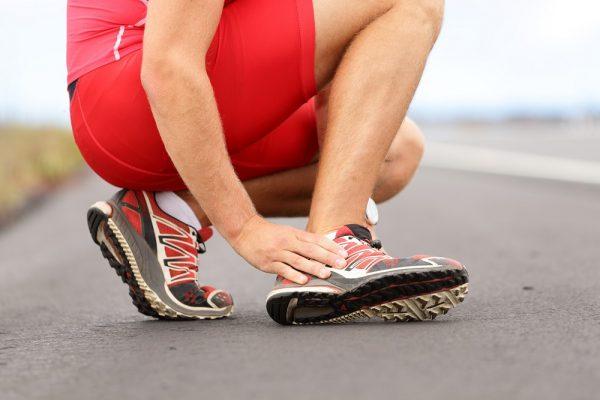Have you been looking for some foot support and turned to insoles only to experience pain and discomfort when using them?
Considering insoles are specifically designed to alleviate any kind of discomfort, and aid in correcting injuries, it really begs the question:
Are Insoles Supposed to Hurt?
In a nutshell, no, insoles are not supposed to hurt. As long as you are buying proper insoles according to the area that requires support, choose an appropriate material, and place them in correctly, they should help ease your pain.
Are Insoles Supposed to Hurt During the First Few Uses?
When you buy insoles, you might think they need to be broken in, like any new pair of shoes. Wearing them more frequently will shape them according to your feet, and they will become comfortable to walk on. While that is a logical assumption, if continuous use is just aggravating the pain, those insoles are not right for you.
There is a small period of time initially when the inserts are adjusting themselves inside your boots, but this should only cause slight discomfort, not real pain. If you experience consistent pain, you can just throw those painful insoles right in the back of your closet till further notice.
The first question you should be asking yourself is, why do you even require insoles? My father uses them because he is old, and his feet hurt if he stands up too long. You might have a job that requires you to move around all day, which is much healthier than my job of sitting in front of a computer screen all day.
You could also have a very active lifestyle. Where you find the strength to exercise daily, please let me know, so I can have a sip from that well. Finally, you could have a medical condition where you need medical grade inserts, better known as orthotics.
Now that you have identified the need, we move onto whether you should get off-the-counter insoles, or custom-made ones. Side note, off-the-counter insoles also include those you can buy online, just not made to order ones. Some of these insoles you find in stores have specific functions.
They could be made for arch or heel support. But, once they are inserted, and are causing further aggravation rather than relief, it is unlikely any improvement will be seen with time. Not only that, but new problems could also arise due to such insoles.
When inserts are custom-made, from the get-go, there should be no discomfort. These are targeting an already present complication and should be providing you with instant relief.
Does it Matter what Material the Insoles are Made of?
This can be linked back to why are you buying insoles in the first place. Each kind of material has its own benefits. There is no restriction on what an insole can be made out of, as long as it is providing ease. I would, however, recommend not to purchase insoles made for stone or metal, unless you really need them or walk on concrete all day. Those would definitely hurt your feet.
The three materials that are most commonly used are gel, foam, and leather. If you are looking to ease pressure in your feet, which for example, is being caused by your heel, then foam would work best in providing support.
Gel, on the other hand, is used to absorb shock. Shock can easily be explained through running. While running, your foot meets the ground with intensity, and in return, the ground pushes back on your feet with some force. This force can be termed as a shock. Constantly experiencing these can lead to pain in your feet. Hence, gel insoles will prevent that from happening.
Leather insoles are generally used when you need to insert some discrete cushioning inside your socks. They will not feel out of place, while also providing you with some comfort.
An important point to note here is that along with the material, quality also plays a significant role. You might equate a higher price with better quality, but that is not always the case. With inserts, quality signifies how long they last before wearing down. A worn-down insert will cause discomfort. You should choose a material, and brand, that will last longer.
Does the Type of Insole Matter?
By the type of insole, I am referring to what area they might be targeting. A reason an insole might be hurting your feet is that you are using the wrong type. You could be using a full-length insert, while only requiring one that provides heel support.
The most commonly used insoles are partial shoe ones. These will provide support to the part of your foot that needs it. Next, there are heel cups, and heel lifts. While these may seem like the same things, heel cups are for pain relief, and heel lifts are meant to give added height for length differences between legs.
Next, if you are a person that loves wearing heels, or suffer from any medical condition, you can get metatarsal pads to provide comfort for the ball of your foot.
Finally, there are insoles that are full length. These are of several types. There are moldable ones that shape themselves according to the contours of your feet. There are some solely for a cushion affect. There are also ones that provide arch support.
Forewarning: choose the type that would relieve a problem area. We do not want further problems arising due to selecting the wrong type.
Are You Inserting the Insoles Correctly?
It does not hurt to recheck, as the placement of insoles could also be causing your pain. A lot of times we act without reading the instruction manual. Usually, you have to cut insoles along given lines to perfectly fit inside your shoe. If you just stuff it in, space for your foot decreases, which will ultimately result in discomfort.
You could have also placed the insole in the wrong type of shoe. An insert designed for athletic shoes would not be suitable to put inside high heels. Both would require separate insoles designed for their particular properties.
Finally, you might also be trying to use one insole for all your shoes. Sneakers, work boots, joggers, and sandals, all require insoles according to their shapes. Too short or too long insoles result in imbalanced placing.

